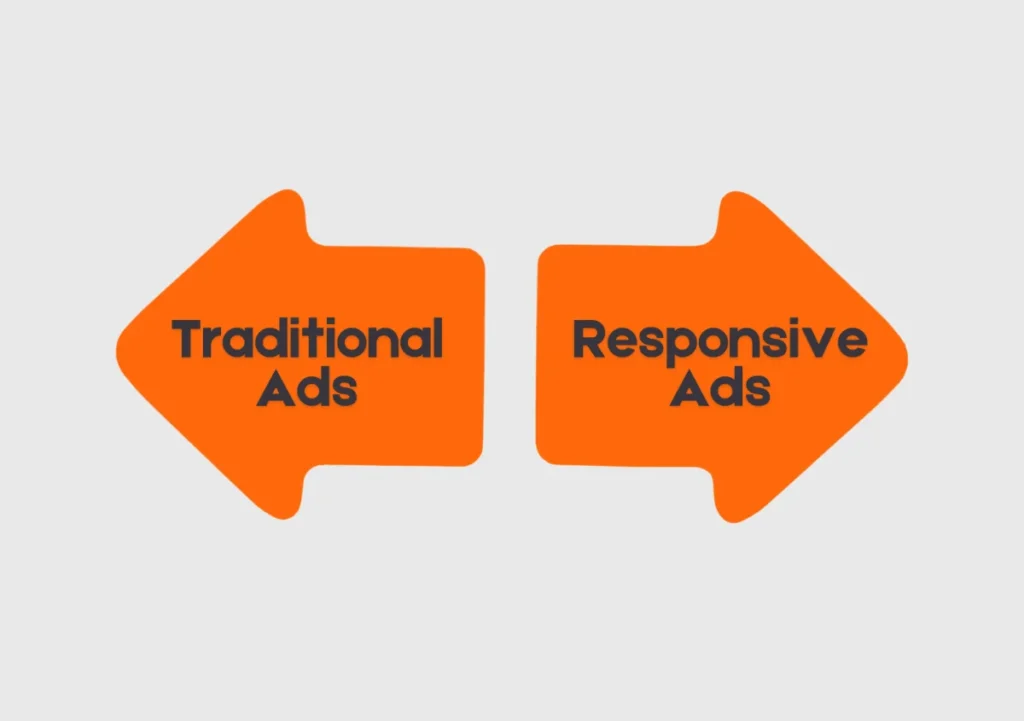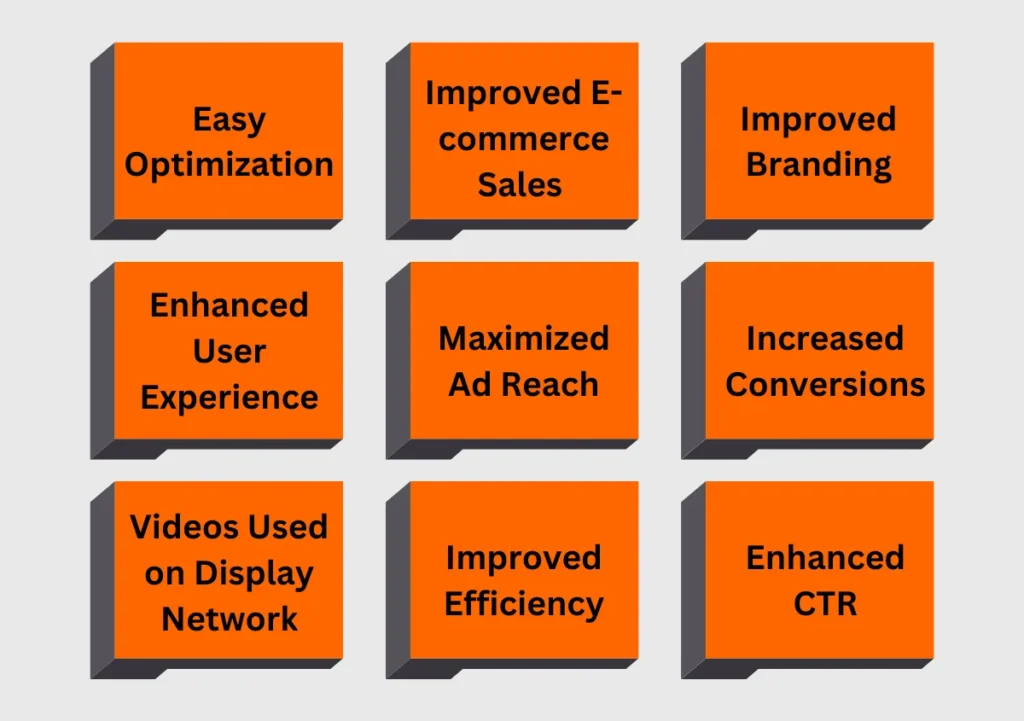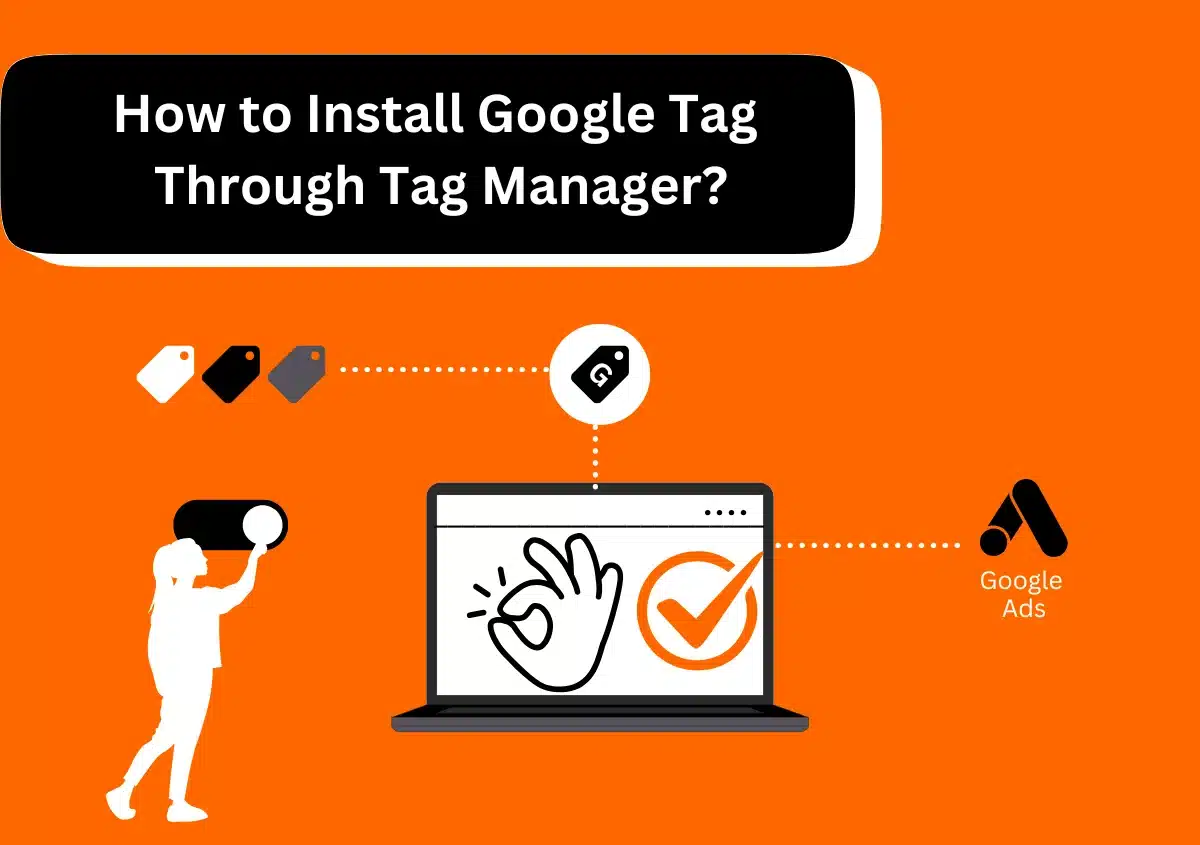Many of you may have faced a challenge wherein you must determine which projects to commit to and when to cut costs to be efficient with the budget. It is possible to spend a lot on digital advertising for your products on Google’s Display Network and not get a good return on investment on your time, money, and efforts.
How can you improve your experience through responsive display ads and also make the most of your budget?
Solution:- You can achieve responsive display advertising that promotes your ads’ reach without consuming as much of your time and money.
There are numerous advantages of using responsive display ads, or RDAs. In terms of reach and easiness to create, they are excellent since they are inexpensive. Their greatest strength, on the other hand, is their automation. They can quickly adapt based on your brand’s prior display ad approach and advertisement assets. As a result, you can quickly develop high-performing display ad tactics and ads.
What are Responsive Display Ads?
Google ads use responsive display advertising or RDAs, which are generated dynamically based on your content and assets-headlines, photos, videos, and a description. Google will also attempt several combinations to see which combination of inputs is most effective using machine learning. These advertisements automatically adapt in size and shape to fit various ad slots. As a result, your brand will be seen by millions of people any day on the Google Display Network.
Responsive display ads are ideal for any display advertising since they have text, native, and banner advertisements for excellent ad conversions. For this reason, it is possible to set up a regular display advertising campaign in Google by enabling responsive advertising to automatically test all of the different ad combinations developed from video submissions, photos, logos, descriptions, and headlines arising from Google’s work to place ads on their Adsense Network, landing pages, Google Sites, and Youtube videos.
Traditional Ads vs. Responsive Ads

As the Display Network’s default ad type, regular ads were replaced by responsive ones. They could be characterized as a traditional, old-fashioned kind of display ad. Some instances include animated GIFs, rich media banners, and static, motionless banners.
On the contrary, responsive ads automatically adapt their arrangements and appearance to fit the available ad space. In addition to enhancing ad performance, responsive ads allow Google to fill as much inventory as feasible on the Display Network.
What are the Key Benefits of Responsive Display Ads?

1. Easy Optimization
Testing responsive display advertising is simple, but optimizing your ad expenditure is not something you just check off your to-do list. However, the optimization process is more accessible when you use Google’s machine-learning abilities. Once the data flow from your advertisements is huge, you will identify which assets are your best performers and which need to be removed.
2. Improved E-commerce Sales with Product Feeds
Another potent strategy for increasing e-commerce sales through dynamic remarketing is responsive ad displays. You can build a feed of all your items and services, each with special features like IDs, photos, and prices. Google, therefore, uses only the most relevant information in the advert to reach people who have already visited your page.
3. Improved Branding
Responsive display or text ad campaigns allow your brand to tap into the ideal consumers that your competitors are pursuing. It also enables you to set yourself apart from the competition and allows you to project your values and image into the minds of your target audience. When making responsive adverts, you can showcase striking banner images with fantastic pictures to draw potential clients’ focus immediately.
4. Enhanced User Experience
Responsive display ads enhance user experience by leveraging Google’s AI systems to process user data and select the right audience for the ads. Additionally, the ads enable you to create display ads for all available browsers using Google’s responsive display advertising that includes auto-resizing capabilities. People would rather see fascinating mobile-first ads rather than have to deal with annoying and meaningless ads. Surfing becomes faster and more fluid thanks to better loading times, which results in a better user experience overall.
5. Maximized Ad Reach at a Lower Cost
With multi-device adaptability and personalized messages, display ads also give you access to various audiences. Some of your potential consumers may utilize various devices to locate your business. Many businesses could meet their display advertising needs with the possibility to reach various viewers, thanks to adaptable responsive ads.
6. Increased Conversions
Customized and relevant content for your target audience is provided in responsive display ads. It determines the type of ad feeds and creative assets you can display, be it a dynamic or a static version. Google’s algorithm experiments with different ad formats. Which combinations work better is determined by that experiment.
How design and copy combinations achieve results is shown in the ad combinations report. The ad strength scorecard also provides you with ideas on how to make the display ads more effective. Responsive ads allow you to design a display ad that enters more auctions and answers more queries. The more choices you have for headlines and descriptions to suit what your potential clientele is seeking, the better. Additionally, you change more frequently and acquire more impressions and clicks. As a consequence, your conversion rate improves.
Also Read: Importance Of Conversion Tracking
7. Videos Can Be Used on the Display Network
Consumers report that over 60% of the time, videos watched online inspired or provided ideas for their purchases. That means you may make your display adverts on Google’s display network more visible by incorporating videos.
If Google believes that displaying movies rather than the same pictures might enhance the performance of your advertisement, it may choose to use videos instead. Your advertising may reach fresh inventory and include up to five diverse films. Ad performance may benefit significantly from sight, sound, and motion for maximum reach and conversions if you try different ad placements:
8. Improved Efficiency and Time-Saving
Most businesses adopt traditional means and prioritize task efficiency to attain superior results. When a patron seeks out information concerning the display ad, conversion on responsive advertising increases by 59%. The degree of energy used in securing each ad through that ad group may be reduced by deploying responsive display adverts. That means you could reclaim your energy to focus on thinking up and conceptualizing some other vital activities that will heighten your utmost performance in digital marketing.
9. Enhanced CTR
Machine learning is responsible for improving customer response to advertising based on the difference or improvement between a Google display advertisement and a responsive display advertisement. When one tests, assesses, and automatically optimizes a range of display advertising, one may benefit. These are the major advantages of making it extremely easy for you to take immediate advantage of the large amount of open slots available on the GDN or Google Display Network:
| Label | Click | Imp | CTR | Average CPC | Cost | Average Position | Conversion | Conversion Rate |
| Display-Banner Ads | 89 | 77,634 | 0.11% | $0.96 | $85.09 | 1.0 | 3.00 | 3.37% |
| Display -Responsive Ads | 2,032 | 568,188 | 0.36% | $0.76 | $1,551.57 | 1.3 | 23.00 | 1.13% |
| Display- Test Ads | 699 | 236,013 | 0.30% | $0.84 | $589.99 | 1.4 | 8.00 | 1.14% |
When to Use Responsive Display Ads?
Responsive display ads are the right choice for you if you want to:
- Optimize Reach Across Devices and Platforms: Responsive display ads are the best option to quickly reach a broad audience across multiple devices and platforms since they maximize the ease of automatically resizing to available ad spaces and screen sizes.
- Simplify Ad Creation and Management: Instead of creating multiple static ad variations, responsive display ads allow you to produce a single ad that adapts to available formats, which saves you time and money.
- Use Google’s Machine-Learning Responsive Display Ads: if you want to prioritize the most engaging ad variations based on user engagement and interaction data. This is made possible by ML algorithms via Google responsive display ads.
- Experiment and Improve Ad Elements: Responsive display ads allow you to test the ad element’s effectiveness, such as different headlines, images, and descriptions while allowing you to optimize their performance.
- Increase Ad Relevance and Personalization: Use responsive display ads to share relevant, personalized information based on people’s interests and behaviors. They are ideal when you are unsure about the available space and adjust seamlessly to it.
Also Read: The Importance Of Mobile Responsive Website Design
How to Optimize Responsive Display Ads?
1. Precisely Monitor Your Conversion Rates
Ensure to follow up on the conversion rates and display the ad campaign results responsibly. You may do so by tracking your conversions and including relevant, current, and high-quality photos, videos, and descriptions for improved results. You can also track what the person who clicked on your ads is doing on your app or website. It includes requesting quotes, purchasing a product or service, or signing up for your newsletter. You can use engaged-view conversion to find non-click conversion metrics so that you may get more meaning from your clicks.
2. Make Use of Targeted Optimization
Optimized targeting allows you to recognize the perfect target audience with which to interact and generate a superior conversed rate that is enthusiastic about the items or services you offer; it is turned on automatically for each campaign that uses display. With Google’s machine learning model, you can collect the information that is essential for dynamic remarketing to create retargeting ads targeted at potential consumers who have stopped actively engaging with your organization. The results feature data such as the keywords on your landing page or in your creative assets, allowing you to connect viewers who fit the scope of the campaign with the campaign’s objectives for maximum ad performance.
3. Make the Most of Attribution Reports’ Power
Track how various display advertising methods work together to generate the most conversions based on the paths customers take to complete conversions, and that’s exactly what the attribution reports are supposed to teach you. They must have been relevant when you worked within the scope of Google Analytics. Attribution reports are available to show you which display ads are best at getting conversions. Optimize the campaigns and make the Google Ads interface more available to engage users.
4. Boost the Quality of Your Ads
While ensuring that your creative image is superb, you must utilize as many assets that can make your advertisement better as a whole. To be able to bring in more customers from your target market and remain competitive, you must also be more inventive with your graphic and video assets.
5. Include the Correct Images (in the Correct Format)
When selecting the ideal image, its format is as crucial as its look. In every ad, 5 to 10 pictures with an edge ratio of 1:1 or 1.91:1 must be used. Only individual images should be used, and all of them should be centered, full color, have square boundaries and edges, and clear borders. Moreover, do not use overlaid graphics or text on your photos. Simple graphics are the best ones since responsive display advertisements are dynamic.
6. Add Your Company Logos in the RDAs
To help gain audience recognition and make it simple to connect with your company, your business logos must also be featured in your RDAs. Your logos should be properly formatted, just like your photographs. If at all feasible, use two logos in your adverts, sized 1:1 or 4:1. Enough to entice the viewer to eke out the details: Use one large title, five headings, and up to five descriptions.
7. Make the Most of Your Ad Copy
Don’t skimp on the copy; by providing a variety of versions, you can help Google figure out what your audience enjoys best and give them additional options for experiments and improvements.
8. Include a Video in Your Ad
According to analyses and research, 81% of marketers believe that video has a direct and beneficial influence on your sales. Your company may immediately profit from increased conversion rates and revenue thanks to video. Use the same unique colors to give your moving visuals and animations in your film a more cohesive appearance and help increase brand recognition.
Also Read: How to Set up a Google Video Ads Campaign
Final Thoughts
Google can make campaign setup easier, but a continuous campaign setup and performance may be difficult for the in-house marketing team.
Google’s reliance on third-party cookies affects targeting choices, meaning marketers need to stop using third-party cookie-based audience data to identify audiences. They must also stop retargeting people based on third-party cookie profiles and start prioritizing first-party data.
Marketers can use the first-party data to create lookalike audience lists. But business owners better start there now, in areas where you can limit budgets. Testing audience expansion and optimized targeting methods will determine the best way to achieve your marketing goals.
If you are ready to apply responsive display ads, request a free consultation or learn more about Website Pandas’ display ads services.













